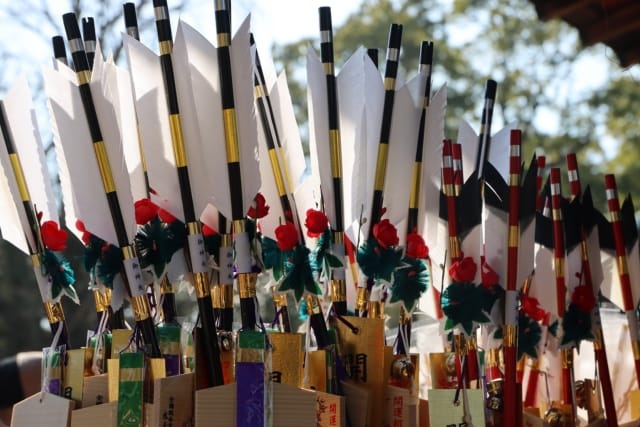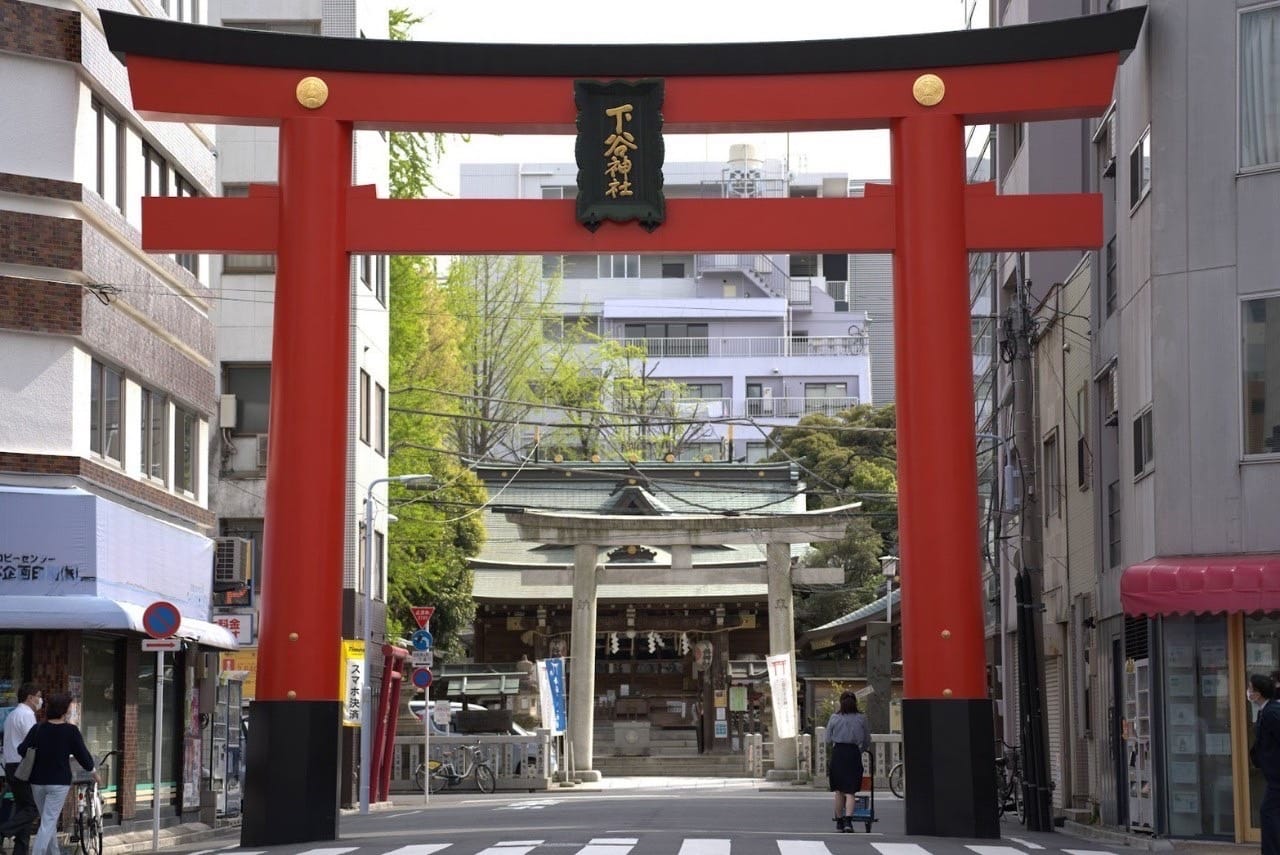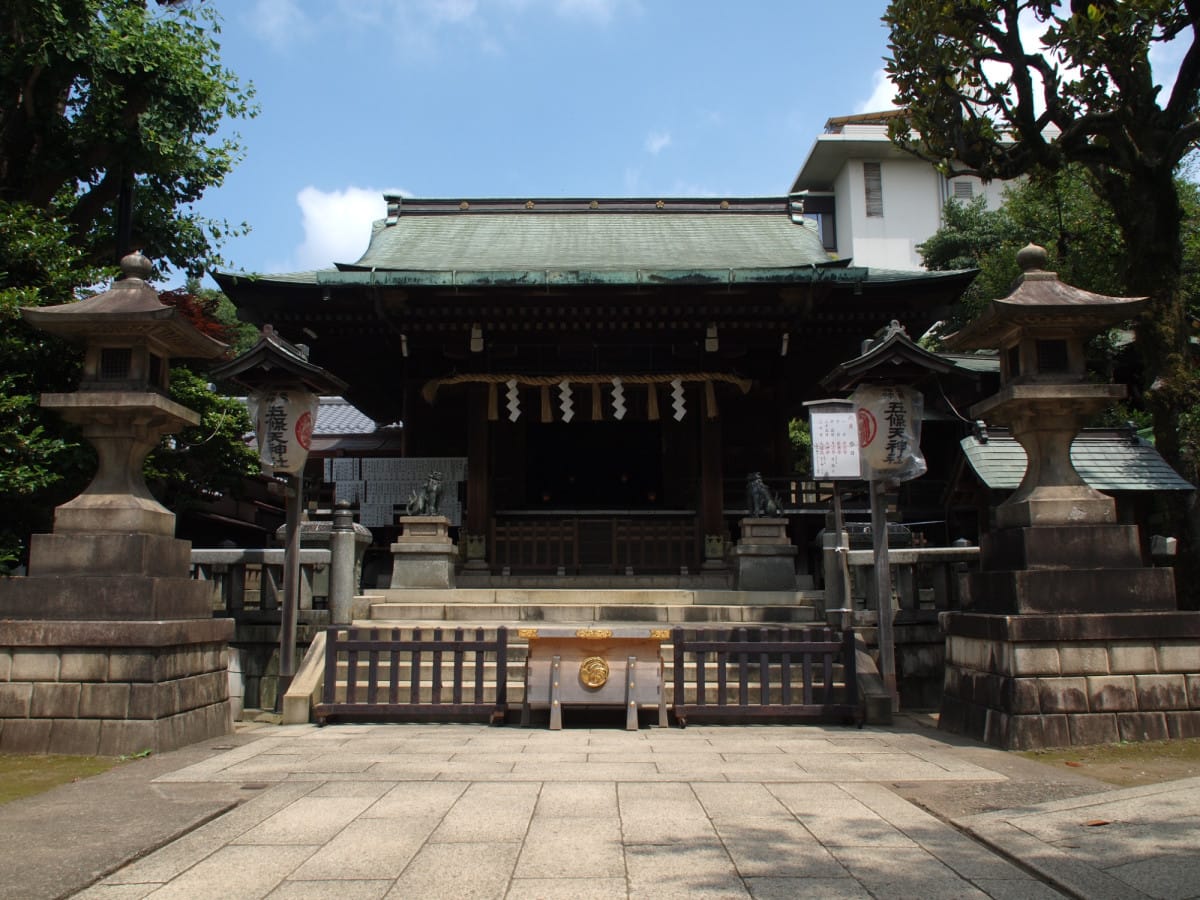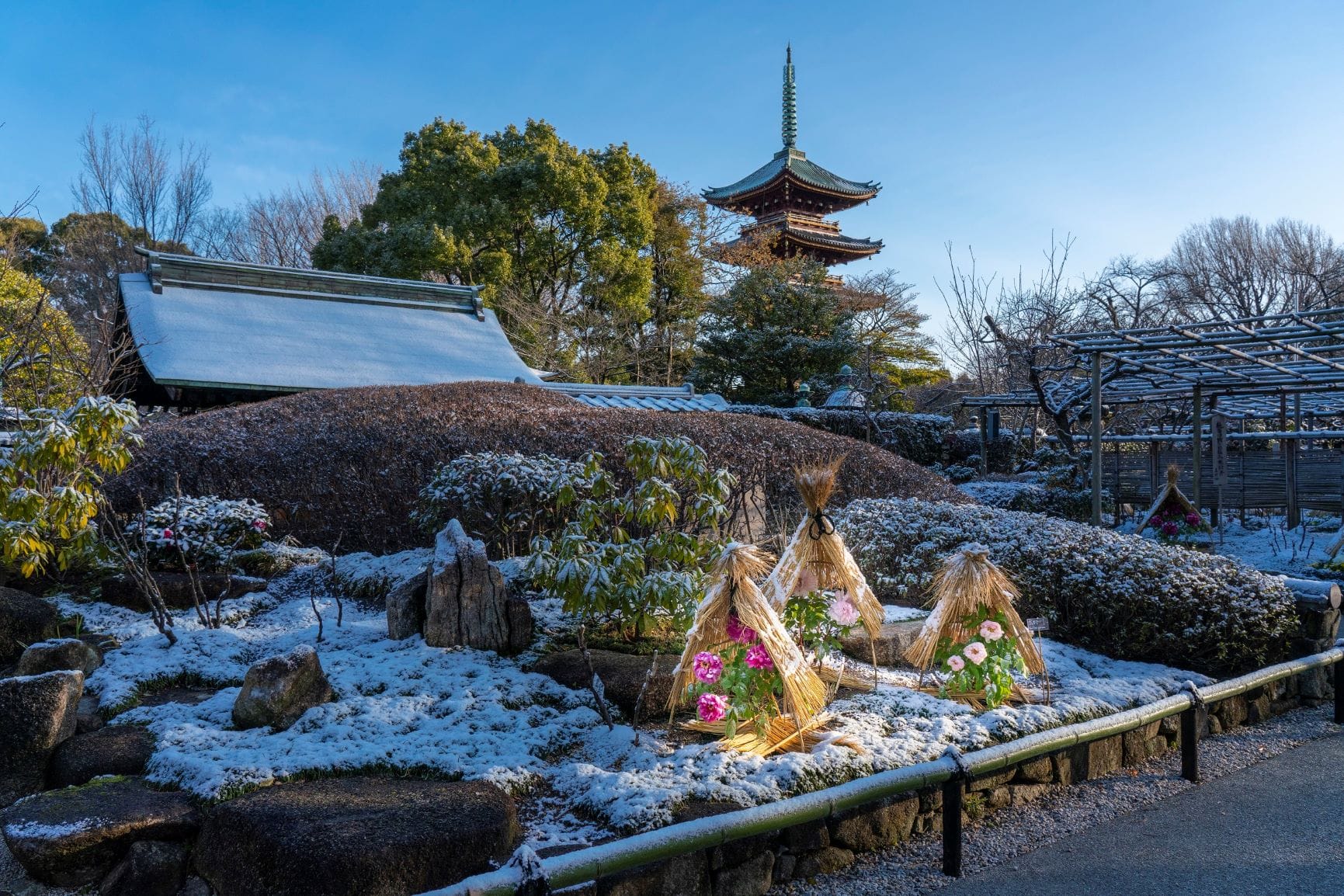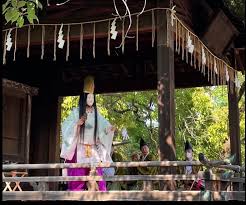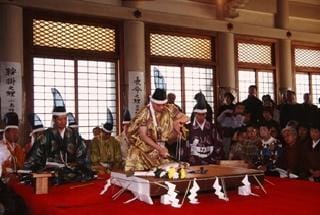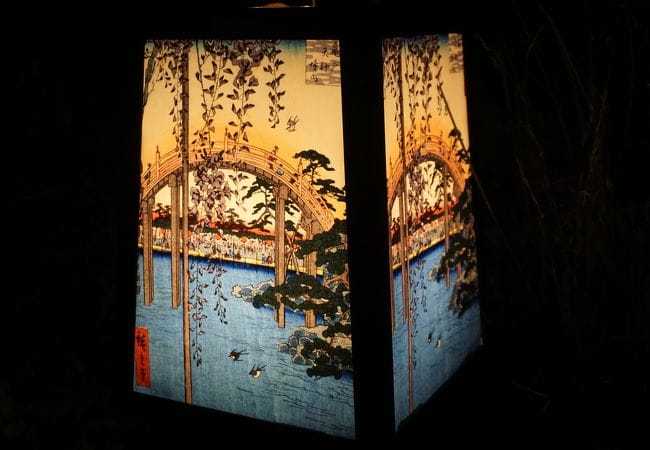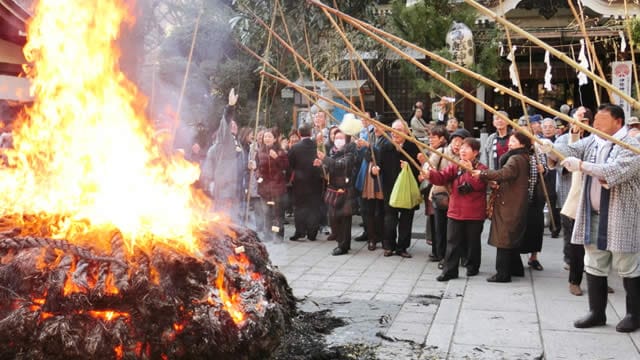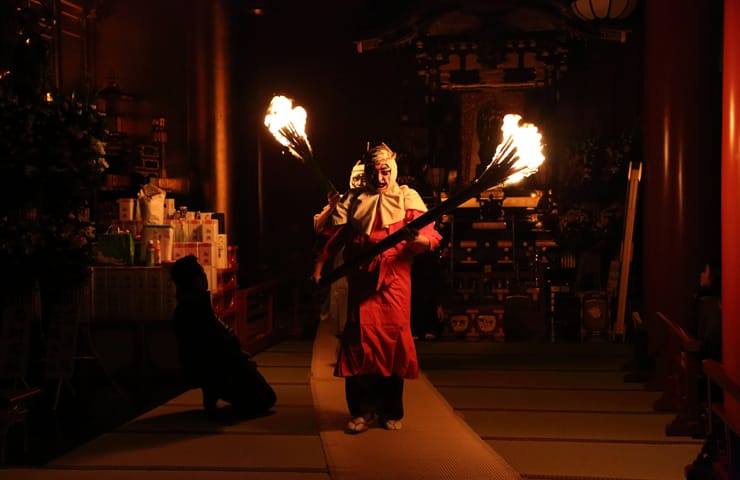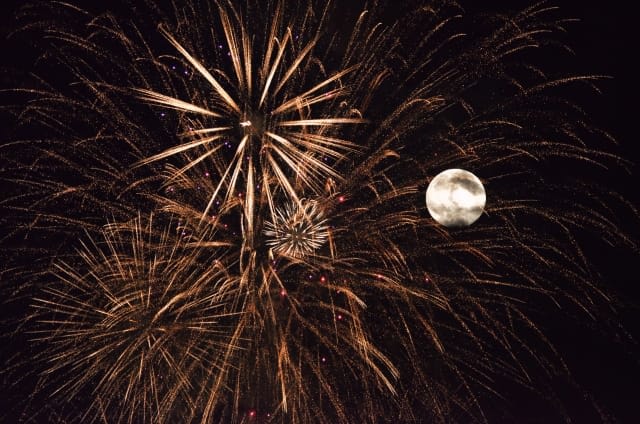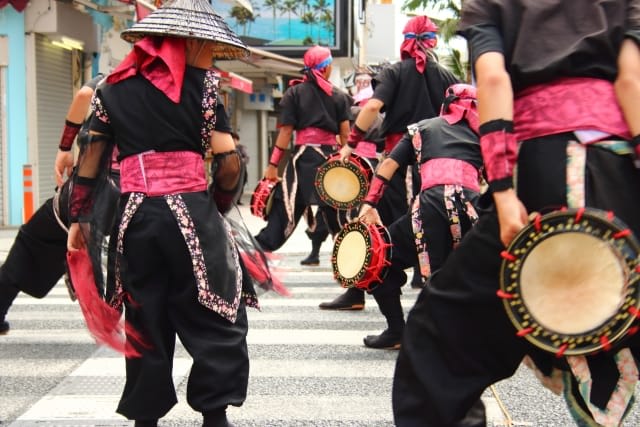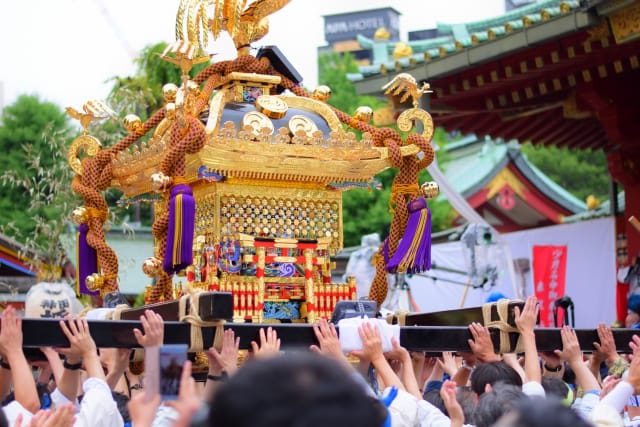Ueno in January 2025: Highlights, Events & Festivals
I wrote this article hoping to share the attractive events of Ueno in January with more international visitors to Japan. I have updated the article to the 2025 version based on my experience of visiting Ueno's tourist attractions many times during October-December 2024 and conducting research.
Another reason is the growing popularity of "local guide tours" as a way to experience a deeper side of the city. Magical Trip offers several tours catering to this demand, with our "Tokyo Bar Hopping Night Tour in Shinjuku" being ranked #1 among all tours on TripAdvisor in 2024.

Magical Trip also offers the "All-You-Can-Drink Bar Hopping Tour in Ueno," which lets you fully experience Ueno's nightlife in Ameyoko. I recommend spending your day exploring the tourist spots around Ueno Park that I'll introduce in this article, then joining the "All-You-Can-Drink Bar Hopping Tour in Ueno" at night to discover local izakayas that only residents know about.
Introduction
Ueno is a popular area for tourists in Tokyo and is always bustling. It features attractive tourist spots such as Ameya Yokocho (commonly known as Ameyoko), a shopping street where you can enjoy shopping, Ueno Zoo with its pandas, and the National Museum of Nature and Science with its valuable exhibits.
January in Tokyo, where Ueno is located, is characterized by severe cold with an average high temperature of 9 degrees Celsius and a low temperature dropping to 3 degrees Celsius. Although there are many sunny days, caution is needed on windy days as the wind chill can make it feel even colder.
January features various events centered around New Year celebrations, including traditional ones, special experiences only available in January, and gourmet events. Let's introduce the highlights, basic information, dates, and access to these event venues.
2025 Year-round Event calendar in Ueno↓
・Ueno: List of Events & Festivals for 2025
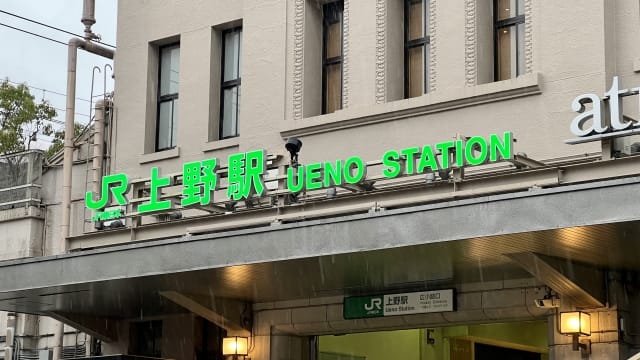
Table of Contents
- Traditional Events in Ueno in January 2025
- Special Experiences Only in Ueno in January
- Festivals and Events in January in Taito Ward, Where Ueno is Located
Traditional Events in Ueno in January 2025
Hatsumode
Hatsumode refers to the first shrine or temple visit of the New Year. It's a long-standing Japanese custom aimed at praying for good health (mubyō sokusai) and happiness in the new year.
It's typically done during the first three days of the year (sanganichi - January 1st to 3rd), or at the latest by the end of the pine decoration period (matsunouchi - until January 7th or 15th, depending on the region).
Saidan Festival and New Year Festival at Shitaya Shrine
Source: Official website
Shitaya Shrine is known as the oldest Inari shrine (oinarisama) in Tokyo, built in the Nara period. It's famous for its benefits of business prosperity and family safety.
The Saidan Festival on January 1st is crowded with many people for hatsumode. When I went, the line extended beyond the shrine grounds to the main street. The New Year Festival held on January 2nd is a festival to pray to the great god for a safe new year.
A highlight is the goshuin (a seal stamp proving shrine or temple visit) offered exclusively from January 1st to 15th for New Year's. With gold accents here and there, it has a festive New Year's flair that's sure to be memorable. Be sure to get your hands on this rare, limited-quantity goshuin.
<Information>
Dates: January 1 and 2, 2025
Access: 6 minutes walk from Ueno Station, 2 minutes walk from Inaricho Station, 5 minutes from Shin-Okachimachi Station
Admission: Free
Website: https://shitayajinja.or.jp/
Hatsumode at Sensō-ji Temple
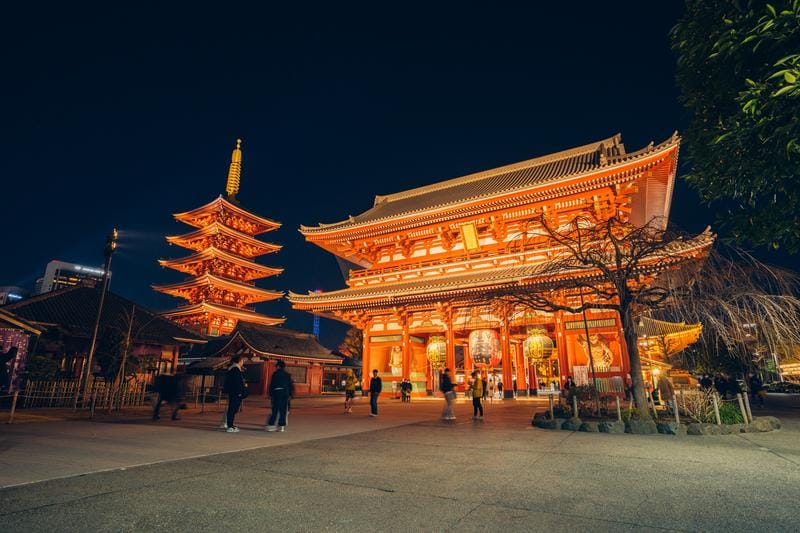
Sensō-ji Temple, built over 1300 years ago, is known as the oldest temple in Tokyo. Although it has been damaged many times by disasters and wars, it has been rebuilt each time, with the last reconstruction in 1950 leading to its current state.
Hatsumode at Sensō-ji Temple, a popular tourist spot, attracts many international tourists as well, with about 2.8 million visitors from New Year's Eve (oomisoka - December 31st) to January 3rd. A highlight is the moment when the New Year's bell (joyanokane - rung from New Year's Eve to New Year's Day) finishes ringing and the start of the New Year (gantan - January 1st) is announced, with a loud cheer from the visitors. The performance, as if saying "We've been waiting for the new year!", is full of energy. When I witnessed it firsthand, my excitement rose and the winter cold seemed to disappear.
Visiting hours vary: January 1st is 0:00-20:00, January 2nd and 3rd are 6:30-20:00, and after the first three days of the year, it's 6:00-17:00, so caution is needed.
<Information>
Dates: From January 1, 2025
Access: 5 minutes walk from Asakusa Station on the Tobu Line, Ginza Line, Tsukuba Express Line, and Asakusa Line
Admission: Free
Website: https://www.senso-ji.jp/
Usokae no Shinji (Gojo Tenjin Shrine)
Source: TAITO Odekake Navi
The Usokae no Shinji at Gojo Tenjin Shrine is a custom of purifying and cleansing the misfortunes, calamities, and ill omens of the previous year as "lies" (uso), and praying for good fortune in the new year. It's said to be based on the word play between "uso" (lie) and "uso" (bullfinch), a bird associated with the Tenjin deity.
A highlight is the wooden carved bullfinch amulet (shimpu - a charm issued by shrines and temples). It's said that placing this amulet on the household altar (kamidana - a place to enshrine gods at home) for a year will ward off misfortune and attract good luck. Some have golden heads, which are said to attract even stronger luck for the year.
The bullfinch amulets are limited in quantity, so people line up hours before the distribution starts. Their adorable design is soothing just by displaying them in a visible place at home. If you're interested, try to wake up a bit early to get your hands on one.
<Information>
Date: January 25, 2025
Access: 5 minutes walk from Ueno Station
Admission: Free (Distributed items are 1500 yen)
Website: https://www.city.taito.lg.jp/event/kanko/usokaenosinzi.html
Ueno Toshogu Shrine Winter Peony
Source: Official website
The Winter Peony at Ueno Toshogu Shrine allows you to enjoy winter peonies in the garden with the shrine buildings and five-story pagoda (gojunoto) as a backdrop. Winter peonies are flowers that normally bloom in spring but are made to bloom early in winter through temperature control. Known as auspicious flowers because they bloom in winter when flowers are scarce.
A highlight is the sight of peonies wearing "warabocchi" (straw hats woven to protect from winter cold). Their appearance, enduring the cold and blooming proudly, conveys not only beauty but also a dignified strength. When I went, it happened to be the day after it snowed, so I could enjoy the scenic view enhanced by the snow decoration (yukigesho - scenery beautifully covered in snow).
This is the only place in Tokyo where you can view 160 plants of 40 varieties of winter peonies. Don't miss this chance to appreciate this precious winter spectacle.
<Information>
Dates: January 1, 2025 - February TBD
Access: 5 minutes walk from Ueno Station, 10 minutes walk from Nezu Station
Admission: Adults 800 yen, Free for elementary school students and younger
Website: https://uenobotanen.com/schedule/winter/
The Traditional Event "Offering of Sacred Music and Dance" at Ueno Toshogu Shrine is Also Popular
Source: Official Facebook
The offering of sacred music and dance (okagura) at Ueno Toshogu Shrine is an event where you can see traditional performances and dances in a historic building.
Ueno Toshogu Shrine, built in 1627, is a shrine that deifies Tokugawa Ieyasu, the great shogun who unified Japan, as a god. Its golden exterior is glamorous and popular with tourists. It has been designated as an important cultural property of Japan as a valuable building from the early Edo period, having survived without damage from disasters or earthquakes.
Watching the performers dance in traditional costumes and listening to the relaxed music can make you feel like you've time-slipped to the past. Experience this traditional atmosphere in a calm setting.
<Information>
Date: TBD January 2025
Access: 10 minutes walk from Ueno Station (JR and Metro lines), 12 minutes walk from Ueno Station (Keisei line)
Admission: Free
Website: https://www.uenotoshogu.com/spot/
Special Experiences Only in Ueno in January
Manaita-biraki (Bando Hoon-ji Temple)
Source: TAITO City Official
Manaita-biraki is a traditional event where two carp are placed on a cutting board, and a Shijo-ryu (a school of Japanese cuisine dating back to the Heian period) master wearing an eboshi (a type of hat worn by men from the Nara to Edo periods) and hitatare (men's formal attire) prepares the carp using only a knife and chopsticks, without touching them with his hands. This event has continued since the Edo period, using carp, which is considered an auspicious fish for temples.
A highlight is watching the skillful use of chopsticks to prepare the carp without using hands. The masterful knife skills performed in a solemn atmosphere are impressive and captivating. After arranging the carp into auspicious patterns and characters, it is served to the attendees.
<Information>
Date: January 12, 2025
Access: 5 minutes walk from Inaricho Station
Admission: Free
Website: https://www.city.taito.lg.jp/event/kanko/manaitabiraki.html
Ueno Hanatouro Ukiyo-e Lanterns
Source: 4 Travel
Ueno Hanatouro Ukiyo-e Lanterns is an event that started in 2007, where about 200 ukiyo-e (genre paintings from the Edo period) lanterns (andon - a type of lighting) are set up along the streets of Ueno Park. When dusk falls, the lights come on, creating a different atmosphere from daytime.
The ukiyo-e lanterns recreate the masterpiece "One Hundred Famous Views of Edo" (a series depicting the townscapes and landscapes of Edo) painted by Utagawa Hiroshige, a famous artist who continued to depict Japanese landscapes, from 1856 to 1858.
I visited with my family, and we felt a sense of warmth and comfort from the gentle light emitted by the lanterns. It's sure to give you a taste of Japanese atmosphere, quite different from the colorful illuminations seen in the city.
<Information>
Dates: Mid-October 2024 to late February 2025
Access: 4 minutes walk from Ueno Station (Yamanote Line, Keihin-Tohoku Line, Takasaki Line, Utsunomiya Line, Ginza Line, Hibiya Line), 7 minutes walk from Keisei Ueno Station
Admission: Free
Festivals and Events in January in Taito Ward, Where Ueno is Located
Tondo-yaki at Torikoe Shrine
Source: Event checker
Tondo-yaki at Torikoe Shrine is a traditional event to send off the gods welcomed during New Year's. It involves gathering and burning last year's used talismans, amulets, and New Year's decorations all at once.
A highlight is the moment when, after the priest completes a series of rituals, the amulets are set on fire and the flames suddenly rise up. As the flames begin to burn, children chant "to-ndo, to-ndo" while hitting the ground with bamboo sticks and circling around. The sight of the roaring flames is powerful and impressive.
As it's difficult to set up safe environments for handling fire, there are limited places in Tokyo where you can experience Tondo-yaki. Don't miss this opportunity to feel Japanese traditional culture firsthand.
<Information>
Date: January 18, 2025
Access: 5 minutes walk from Kuramae Station
Admission: Free
Onzahihou Darani-e (Sending Off the Dead)
Source: Official website
The Onzahihou Darani-e (commonly known as Sending Off the Dead) is the most grueling event among those continued since the Edo period, where all resident priests of Sensō-ji Temple gather. It aims to eliminate all calamities and invite good fortune.
The priests perform the "Kannon Secret Offering Method" (kannonhimitukuyouhou), a type of ascetic practice, 168 times (seats) over 7 days, day and night. The content is quite challenging.
A highlight is the final Sending Off the Dead ceremony, which is the only part of the Onzahihou Darani-e open to the public. In this ceremony, two people playing the role of demons appear from the main hall carrying torches (taimatsu), advancing while hitting the ground of the temple precincts. I watched it myself, and the scene of fiercely burning flames being struck down was full of spirit and tension, giving a powerful impression.
There's a legend that the burnt remains of the torches ward off fire and misfortune. If you find some, try taking them home as a substitute for an amulet.
<Information>
Date: January 18, 2025
Access: 5 minutes walk from Asakusa Station on the Tobu Line, Ginza Line, Tsukuba Express Line, and Asakusa Line
Admission: Free
Website: https://www.senso-ji.jp/
Two Recommended Tours to Experience Ueno and Tokyo
Let me introduce you to two exciting bar-hopping tours offered by MagicalTrip, where English-speaking local guides take you to authentic izakayas that are typically hard for tourists to discover.
All-You-Can-Drink Bar Hopping Tour in Ueno
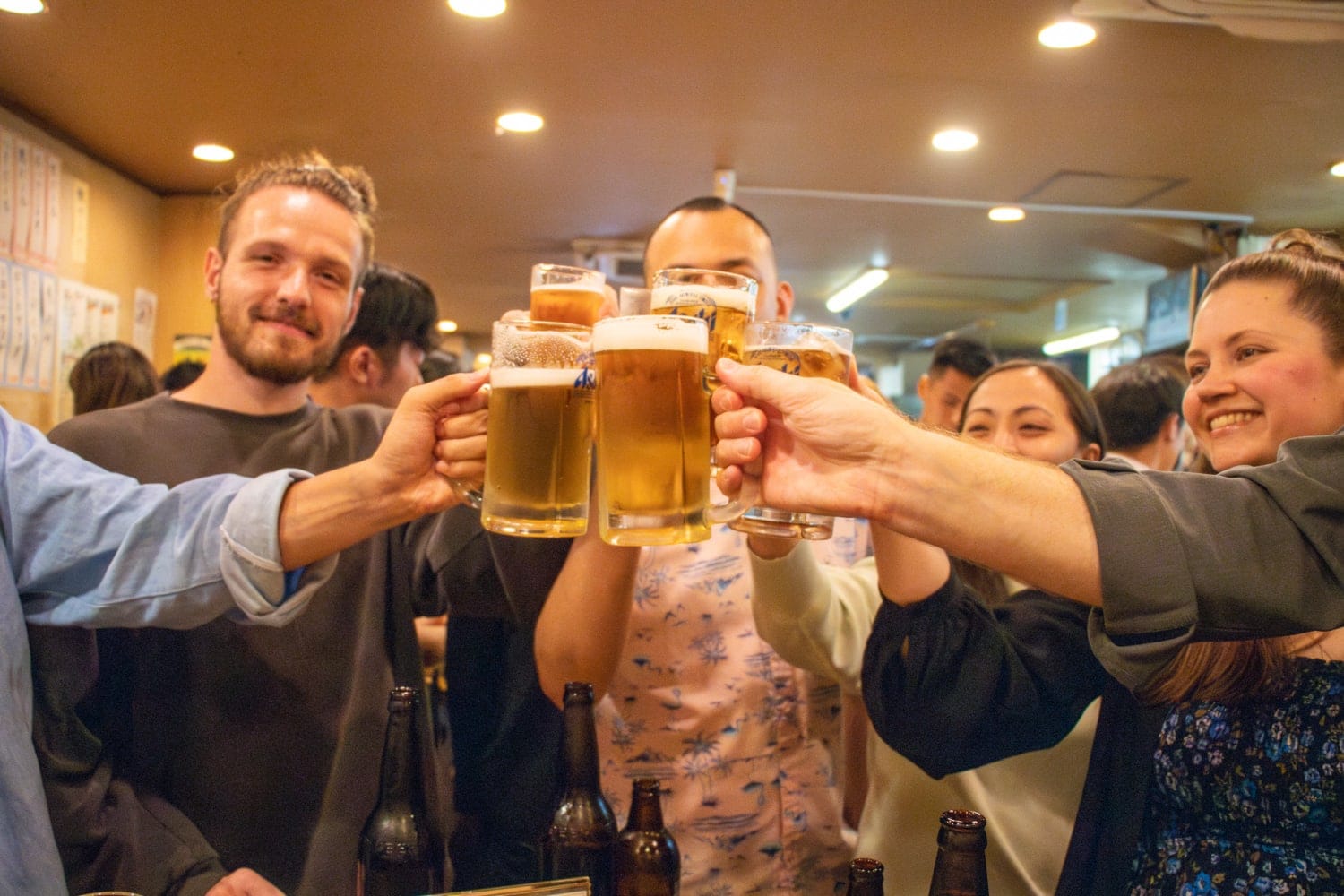
This 3.5-hour tour takes you through the atmospheric streets of Ueno, visiting three carefully selected local izakayas. Priced at $95.35 (approximately ¥14,000), this all-inclusive tour covers all food and drinks.
At the first two establishments, you'll enjoy 45-minute all-you-can-drink sessions with over 30 drink options, including Japanese craft beers, sake, cocktails, and soft drinks. The izakaya menu features classic dishes like yakitori, kushikatsu, and agedashi tofu, with guides providing detailed explanations to help you choose. We can accommodate allergies and dietary restrictions.
Friendly English-speaking guides facilitate interaction with locals and provide a photo service, with pictures sent via email later. The small-group format creates a casual atmosphere perfect for solo travelers, friends, couples, and families.
The tour concludes at either a standing bar or a local ramen shop. Free cancellation is available up to 24 hours before, and date changes are possible. Please note that alcohol is only served to those 20 and older, and the tour involves considerable walking.
Details here: All-You-Can-Drink Bar Hopping Tour in Ueno
Tokyo Bar Hopping Night Tour in Shinjuku
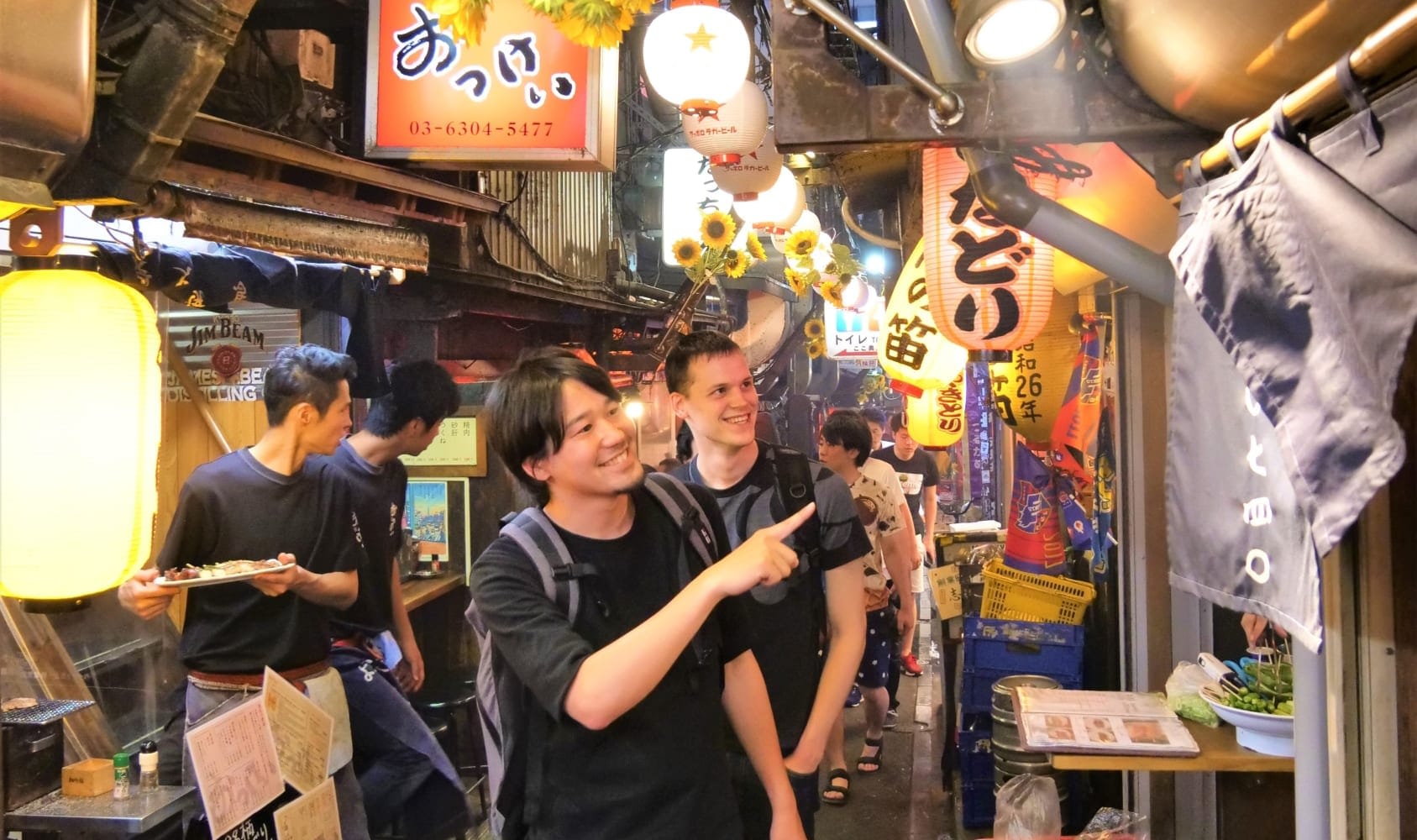
This popular 3.5-hour tour explores Shinjuku's hidden gems for $105.56, including four or more drinks and three food items. Over 20,000 people have experienced this tour, which was ranked #1 among all Japanese experiences on TripAdvisor in 2024.
Visit three local izakayas offering popular dishes like yakitori, gyoza, and agedashi tofu as a satisfying dinner. Vegetarian options are available, making the tour accessible to those with dietary restrictions.
The route covers diverse areas of Shinjuku, including Omoide Yokocho and Kabukicho. Open to participants aged 15 and above, though alcohol is only served to those 20 and older. English-speaking guides provide detailed menu explanations, and additional orders are welcome.
Meeting point is at the black pillar next to UNIQLO Shinjuku West Exit Store, 7-8 minutes walk from Shinjuku Station West Exit. Punctuality is essential as late arrivals cannot participate, receive refunds, or reschedule. Free cancellation is available up to 24 hours in advance, and the tour includes a photo service.
Details here: Tokyo Bar Hopping Night Tour in Shinjuku
These two tours offer unique experiences to savor Tokyo's nightlife. Join our local guides to discover authentic Tokyo food culture without worrying about additional costs. Create unforgettable memories through Japanese izakaya culture.
